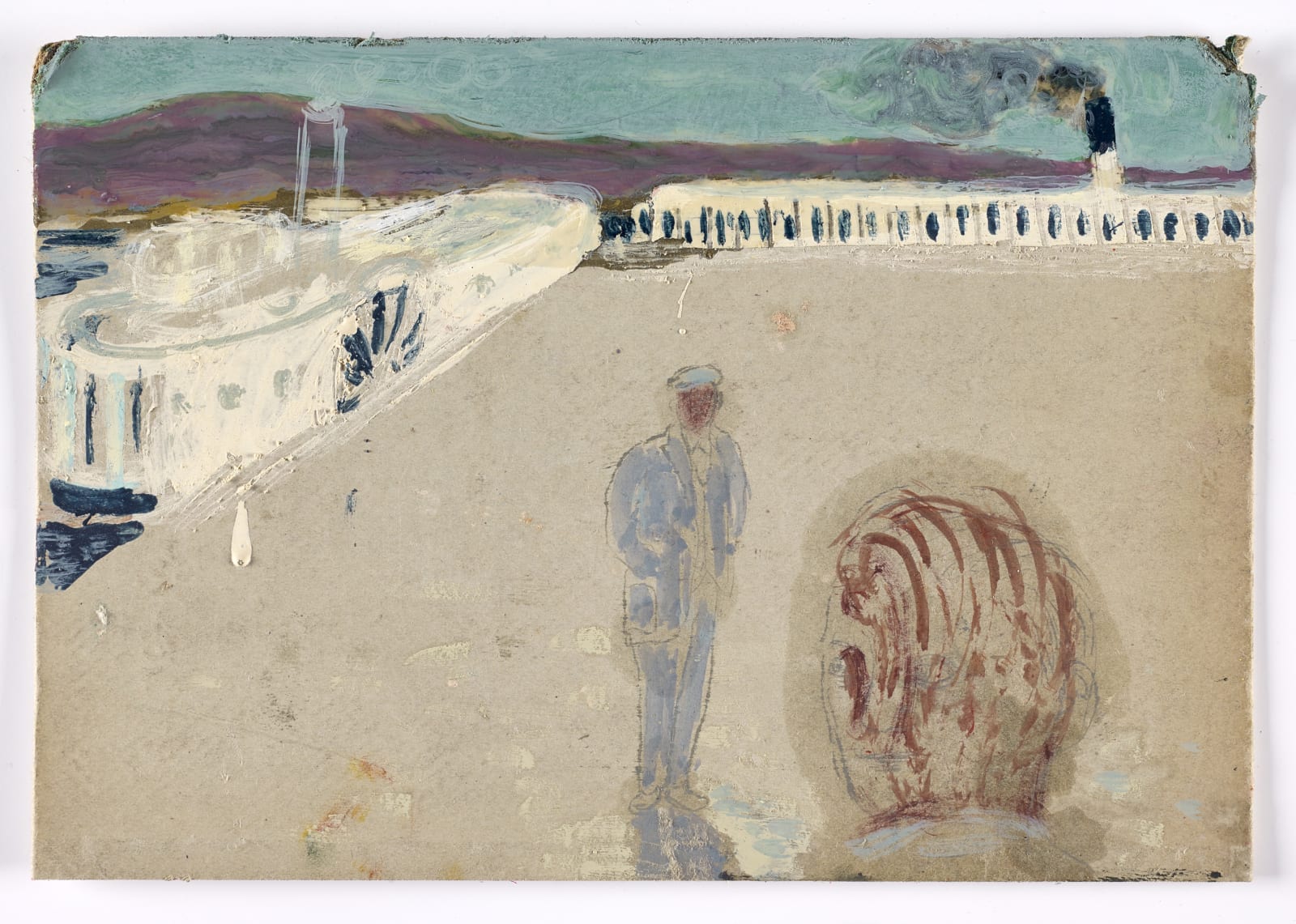Andrew Cranston
But the dream had no sound, 2018
distemper and oil on hardback book cover
17.3 x 24.9 cm
6 3/4 x 9 3/4 in
6 3/4 x 9 3/4 in
One night on the radio I heard W.S Graham read his poem ‘To Alexander Graham’. It stopped me in my tracks and resonated deeply. “But the dream had no sound”...
One night on the radio I heard W.S Graham read his poem ‘To Alexander Graham’. It stopped me in my tracks and resonated deeply. “But the dream had no sound” is a line in the poem, of which this is (unashamedly) an illustration. It is a poem about a dream of meeting his dead father.
“We were surrounded by
Laid-up paddle steamers
In the old quay in Greenock
I smelt the tar and the ropes”
He asks if his dad is proud of him and, although his dad seems poised to reply
“the dream had no sound”
The soundless dream is a cinematic trope used in films such as in Rosemary’s Baby, especially to convey a nightmarish sense of helplessness. Painting has built-in silence. It is the condition of painting. Still, silent. The irony of those screams in Bacon, Munch and Goya. In painting space no-one can hear you scream (for stone deaf Goya not at all).
I thought of you dad and how after your stroke you never spoke again. It was the end of the stories. You tried but the sounds that came out didn’t match your thoughts. The frustration in your face said it all. So you fell quiet, and then silent forever.
I liked how the bleeding shape of tone didn’t quite fit the line of the figures, like a loosely registered print.
I‘ve a soft spot for a certain English neo-romantic period, work made somewhere between 1930-1960 by the likes of Eric Ravilious, Edward Bawden, John Minton and David Jones. I was thinking along those lines.
“We were surrounded by
Laid-up paddle steamers
In the old quay in Greenock
I smelt the tar and the ropes”
He asks if his dad is proud of him and, although his dad seems poised to reply
“the dream had no sound”
The soundless dream is a cinematic trope used in films such as in Rosemary’s Baby, especially to convey a nightmarish sense of helplessness. Painting has built-in silence. It is the condition of painting. Still, silent. The irony of those screams in Bacon, Munch and Goya. In painting space no-one can hear you scream (for stone deaf Goya not at all).
I thought of you dad and how after your stroke you never spoke again. It was the end of the stories. You tried but the sounds that came out didn’t match your thoughts. The frustration in your face said it all. So you fell quiet, and then silent forever.
I liked how the bleeding shape of tone didn’t quite fit the line of the figures, like a loosely registered print.
I‘ve a soft spot for a certain English neo-romantic period, work made somewhere between 1930-1960 by the likes of Eric Ravilious, Edward Bawden, John Minton and David Jones. I was thinking along those lines.

